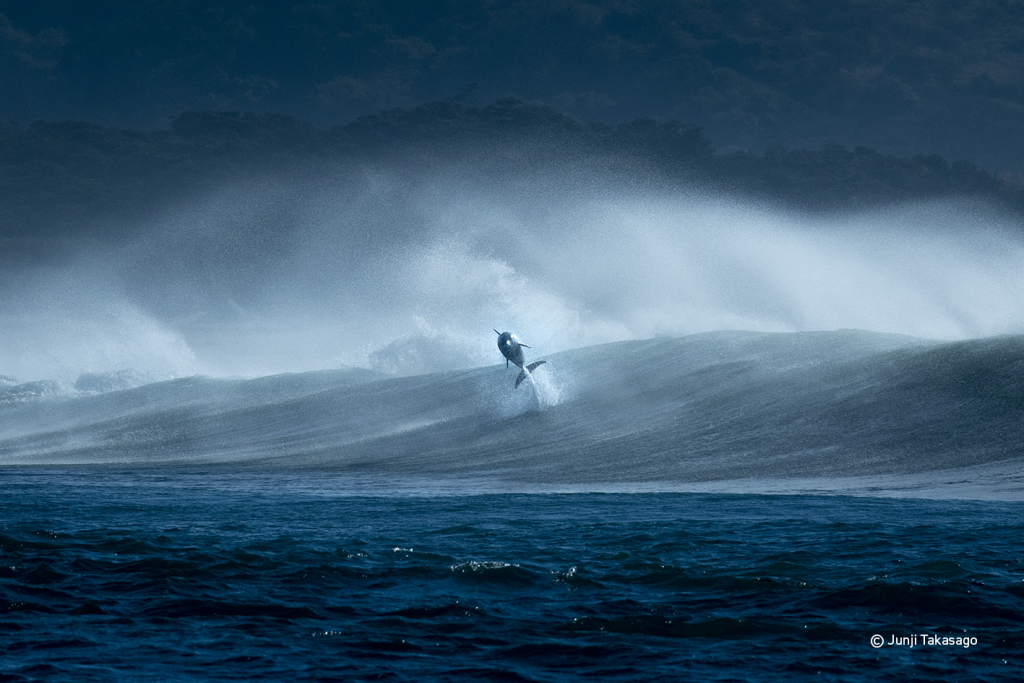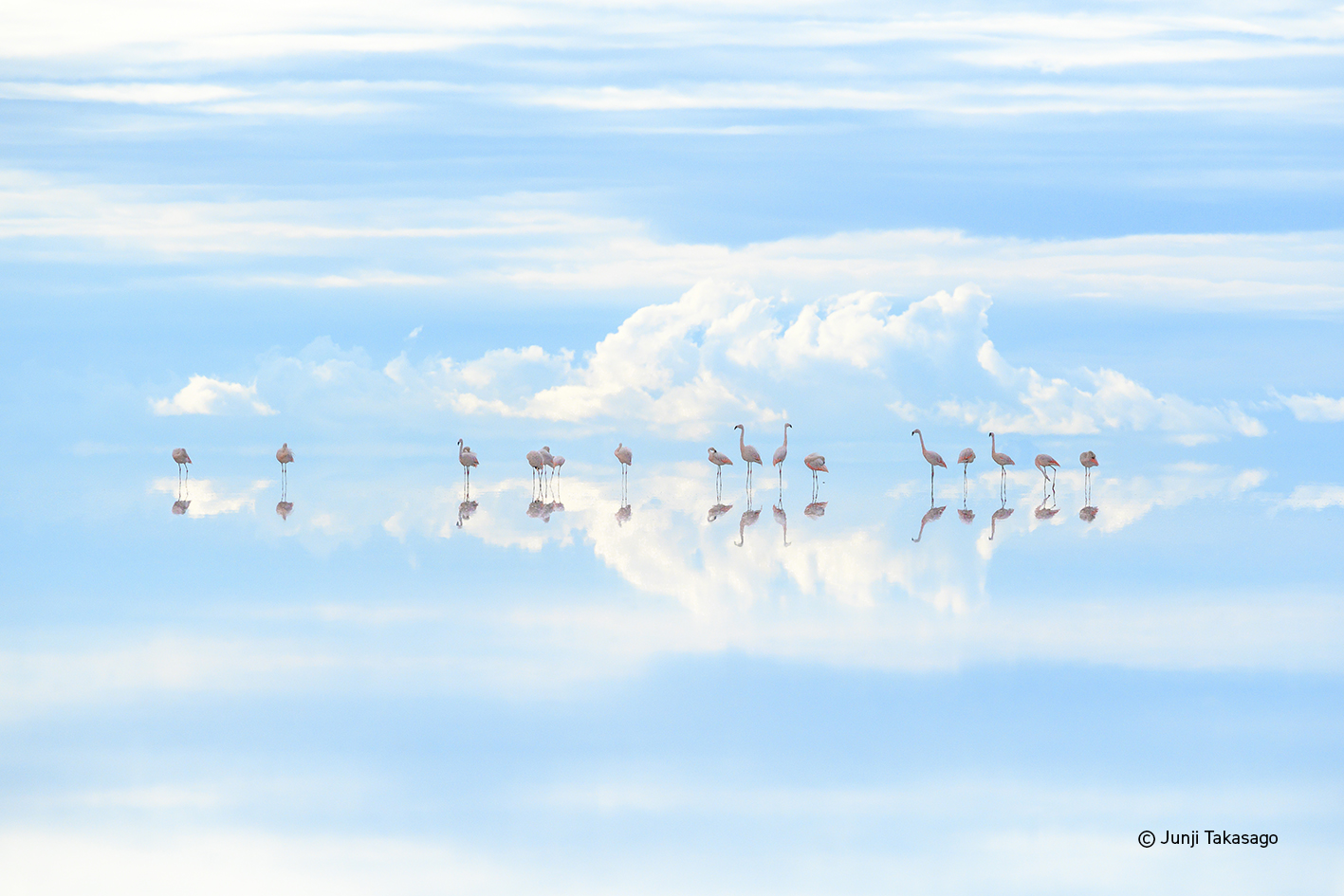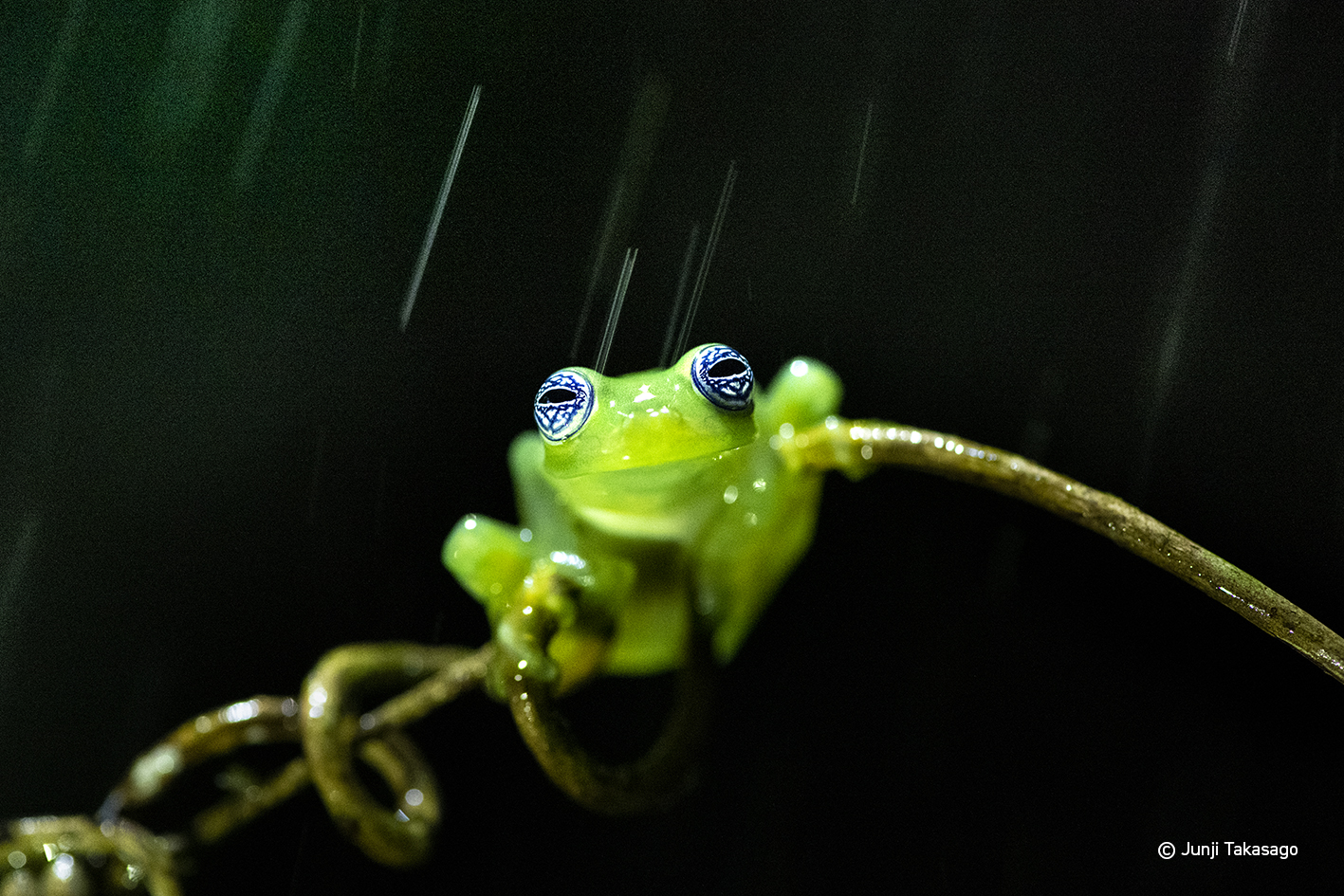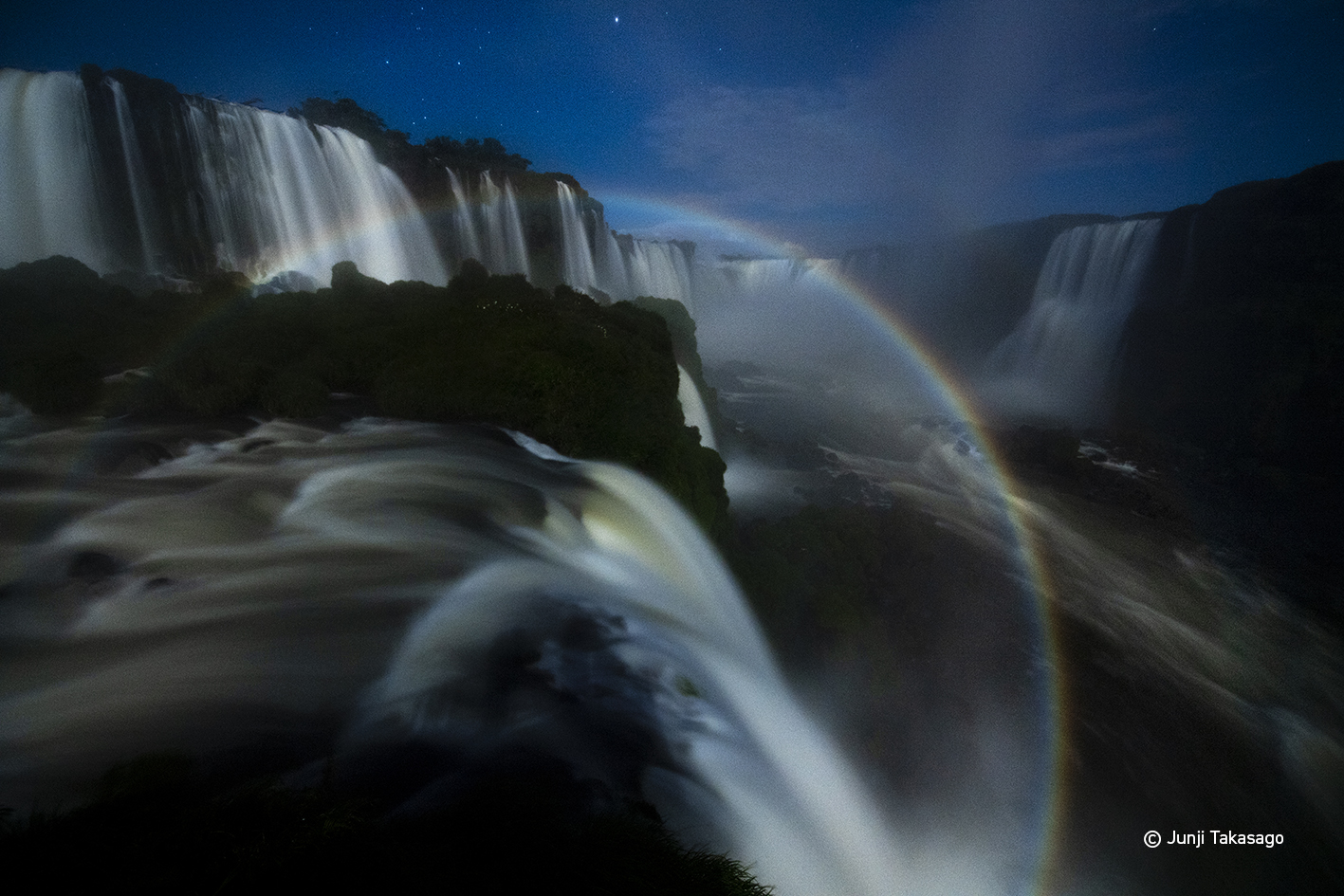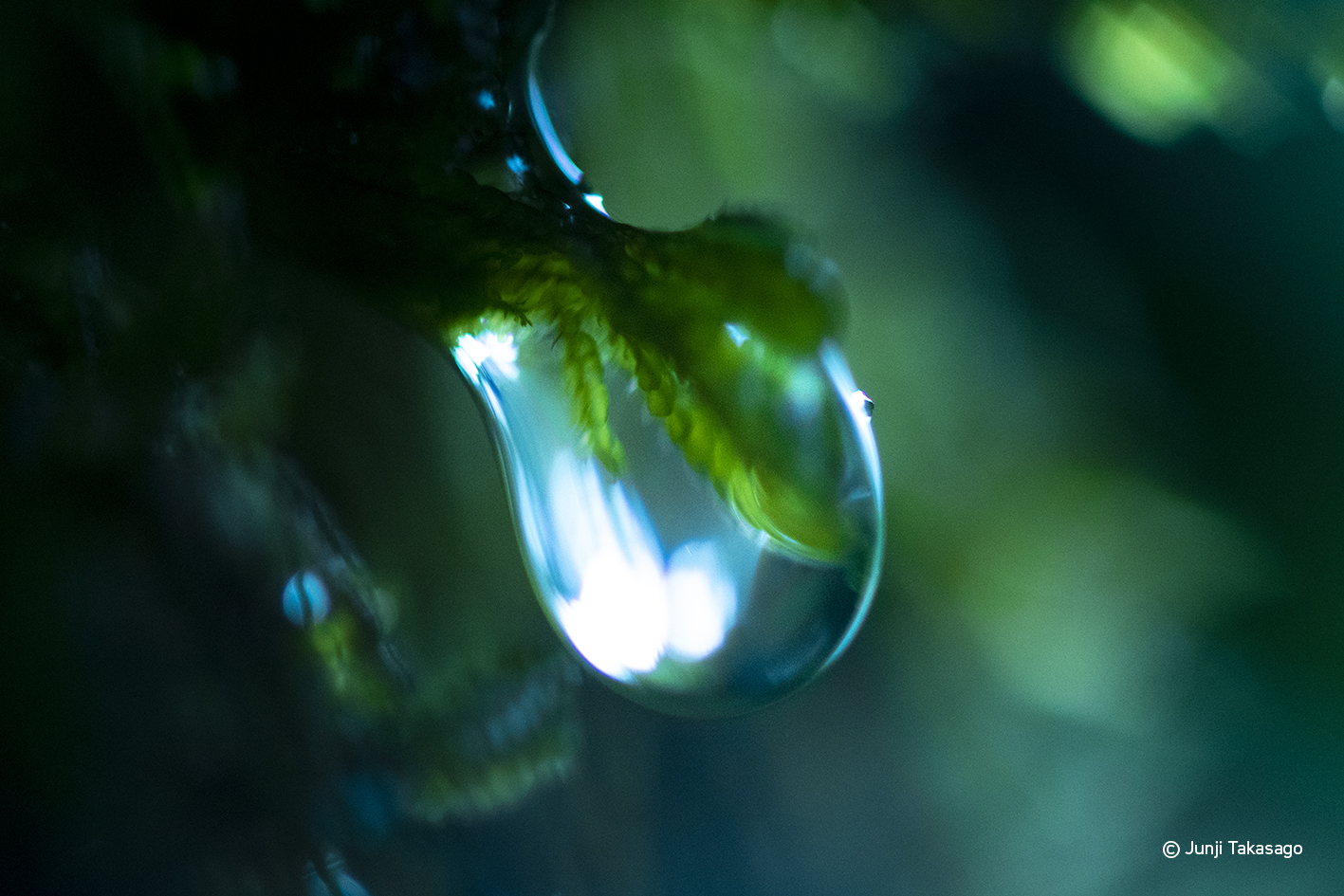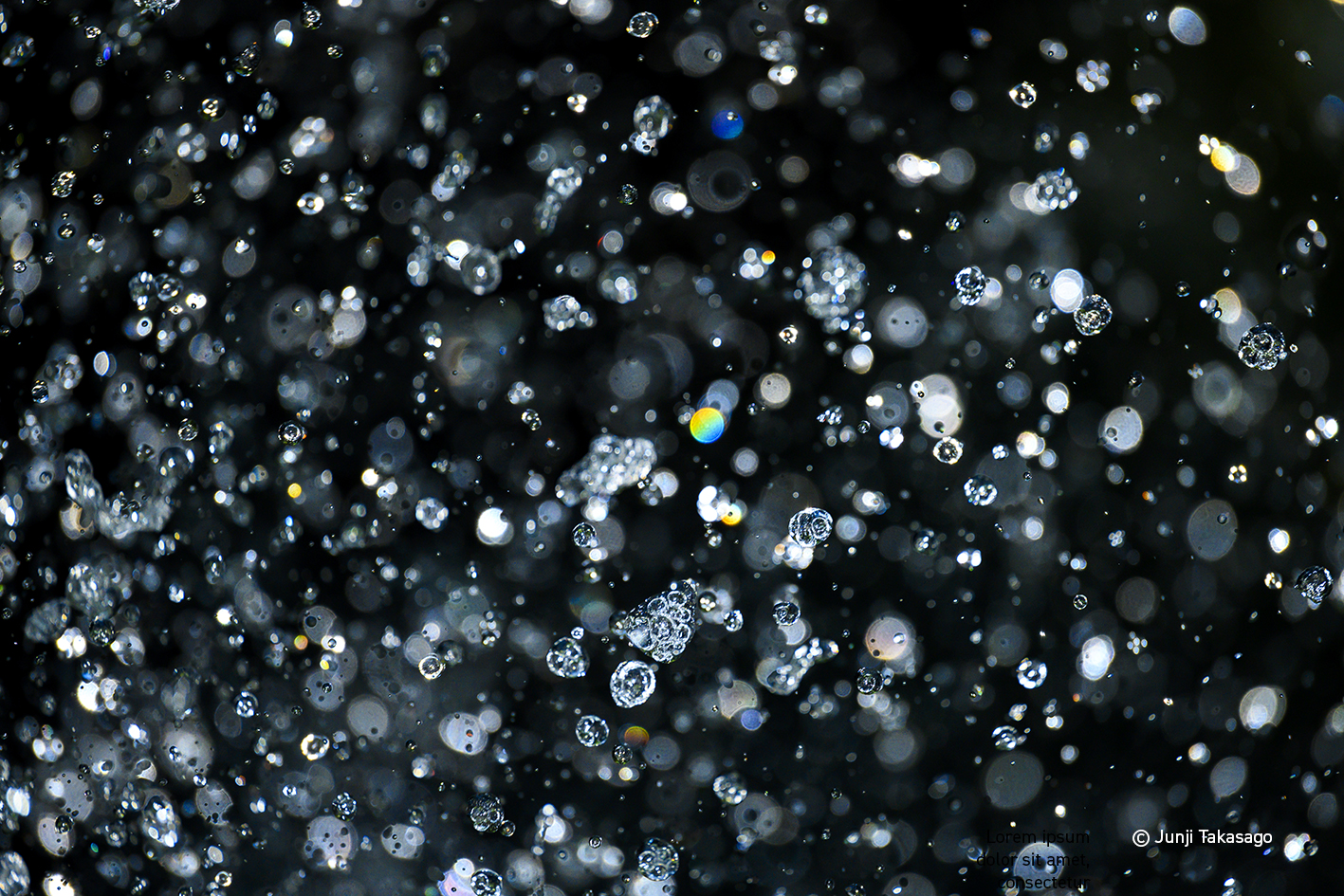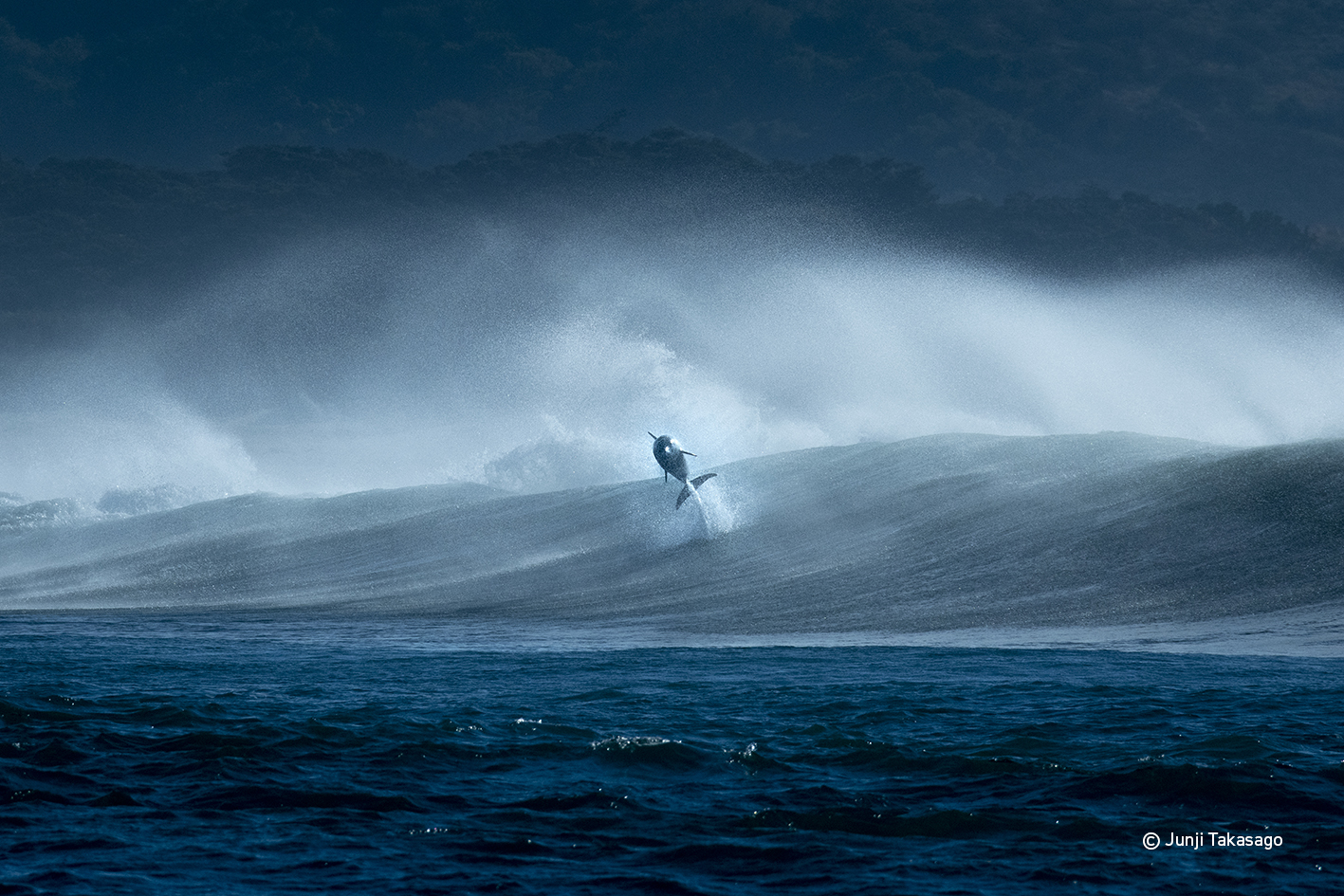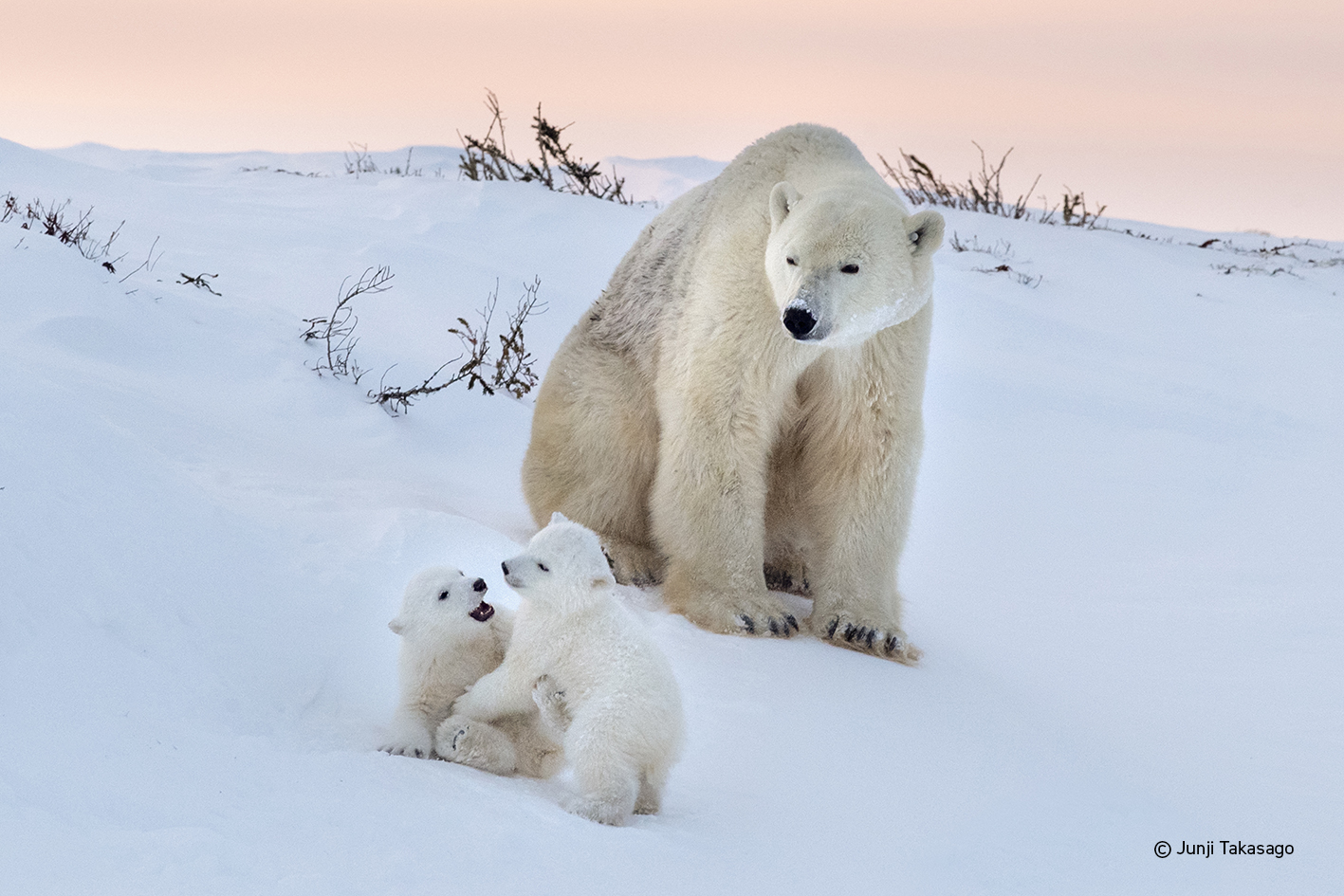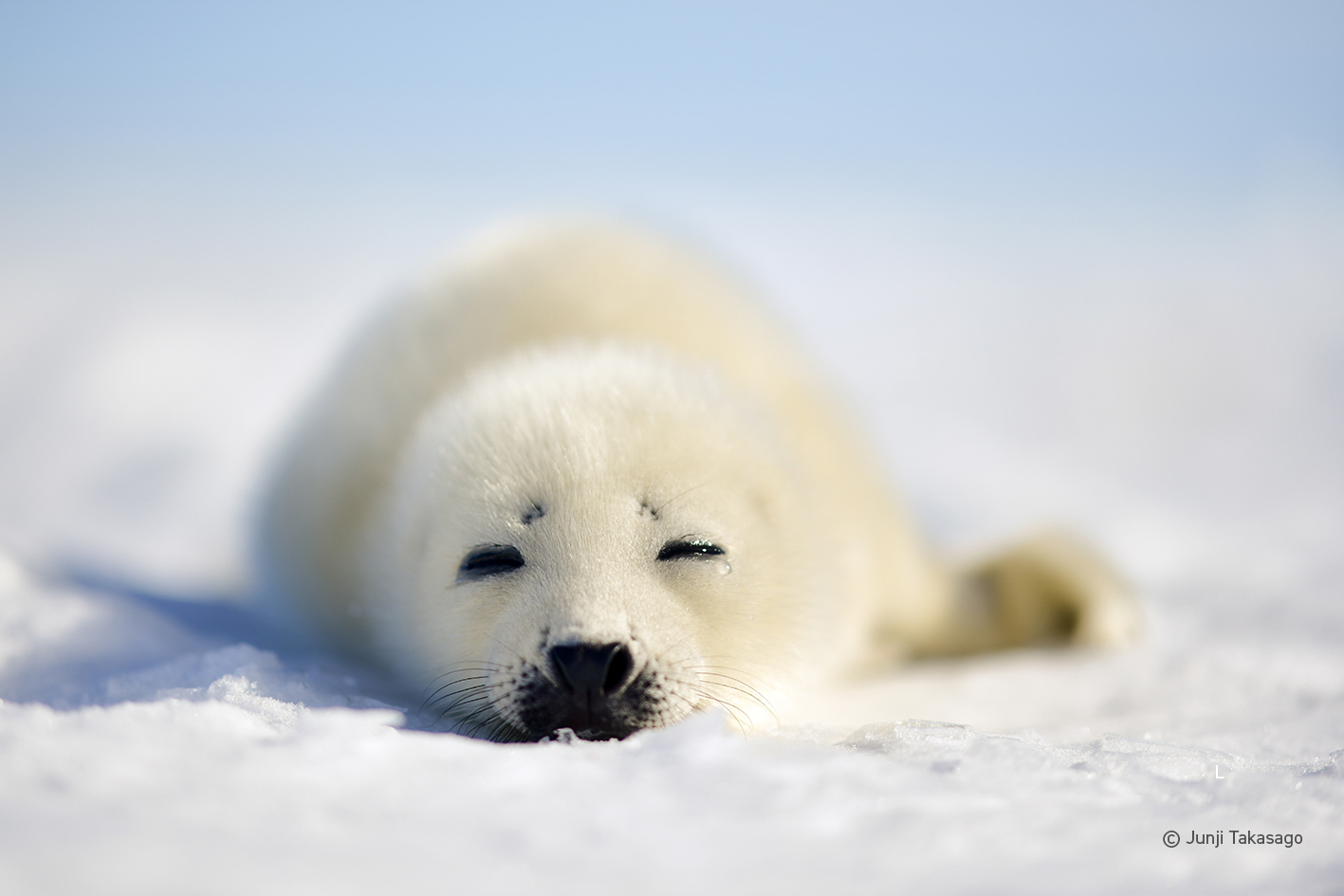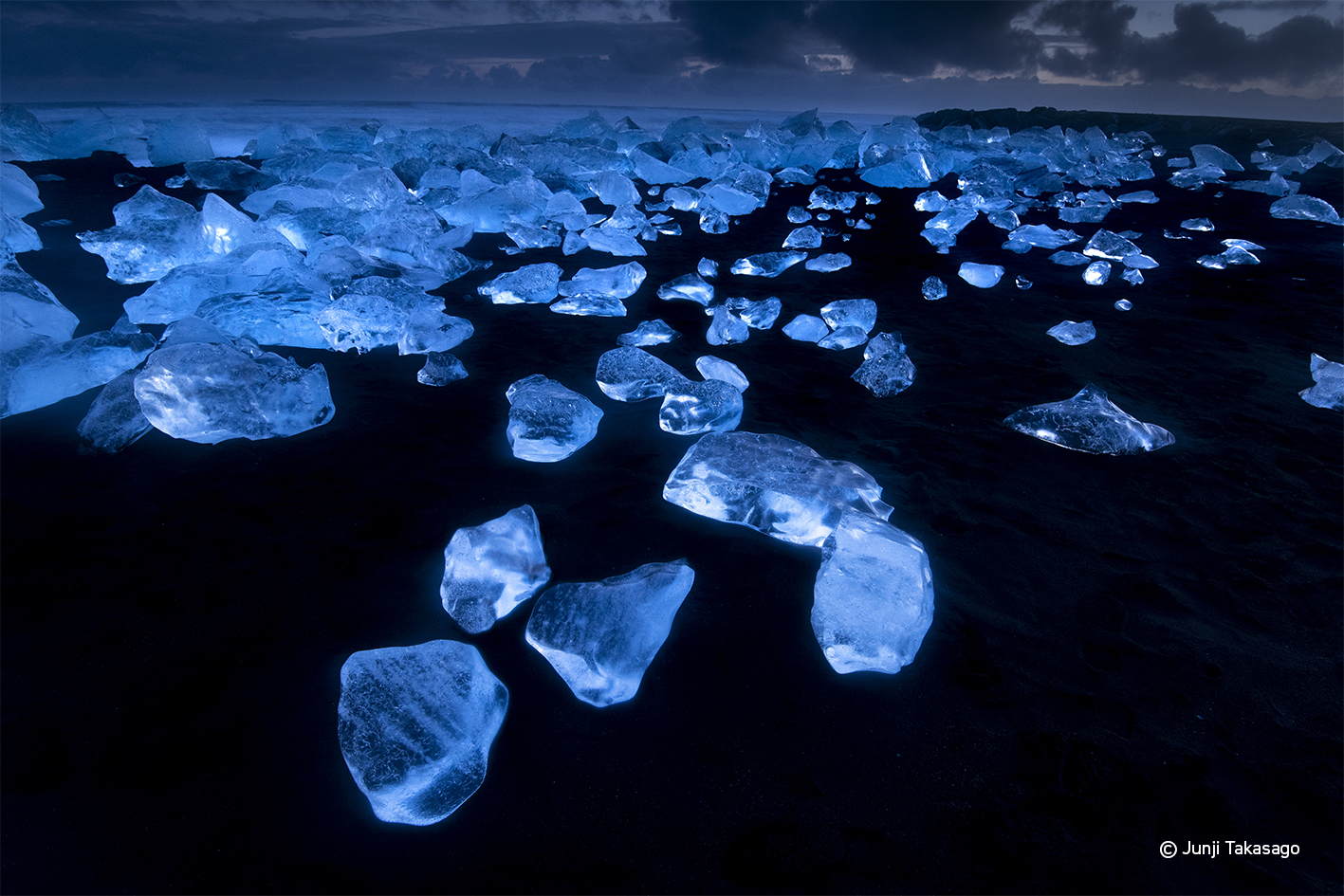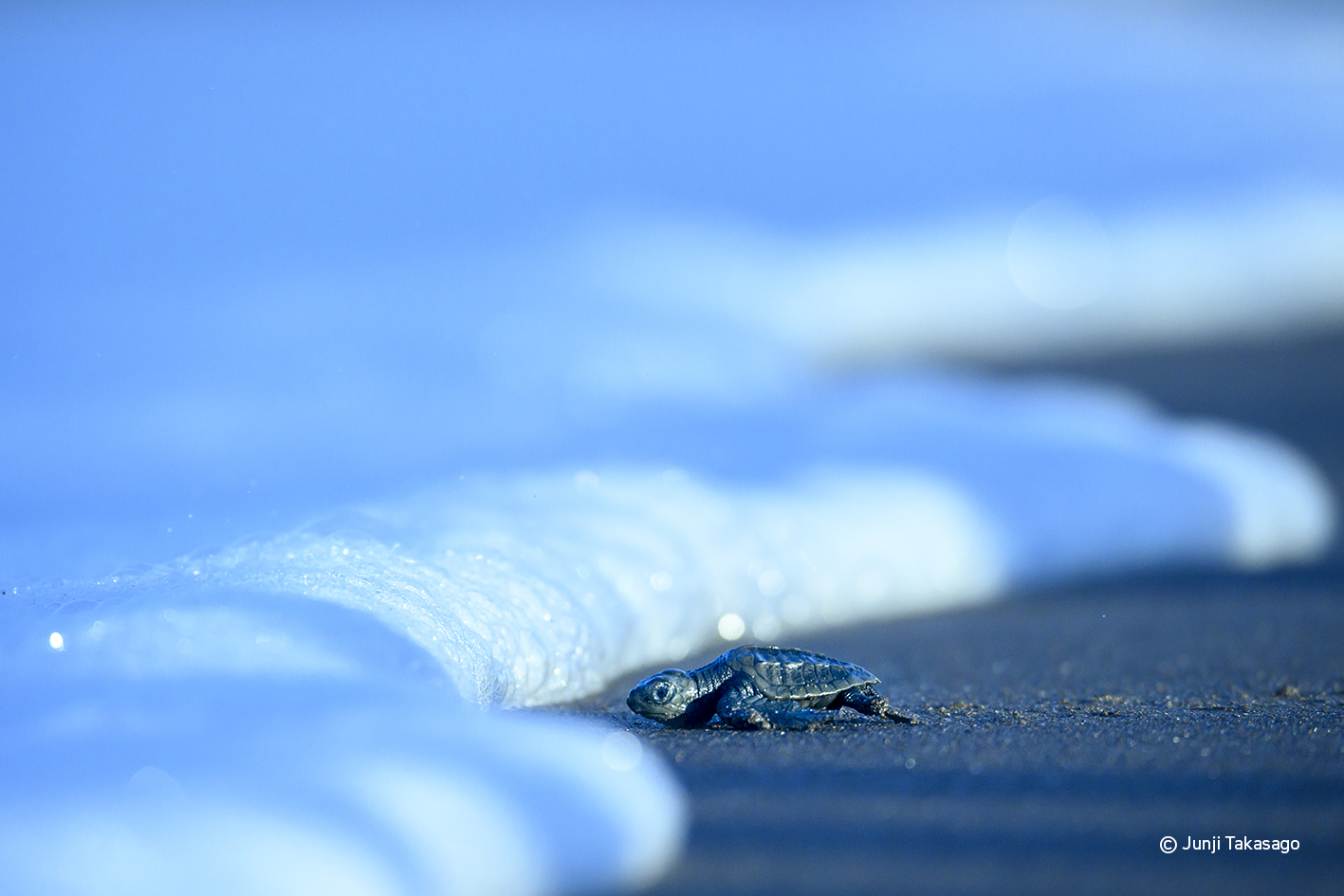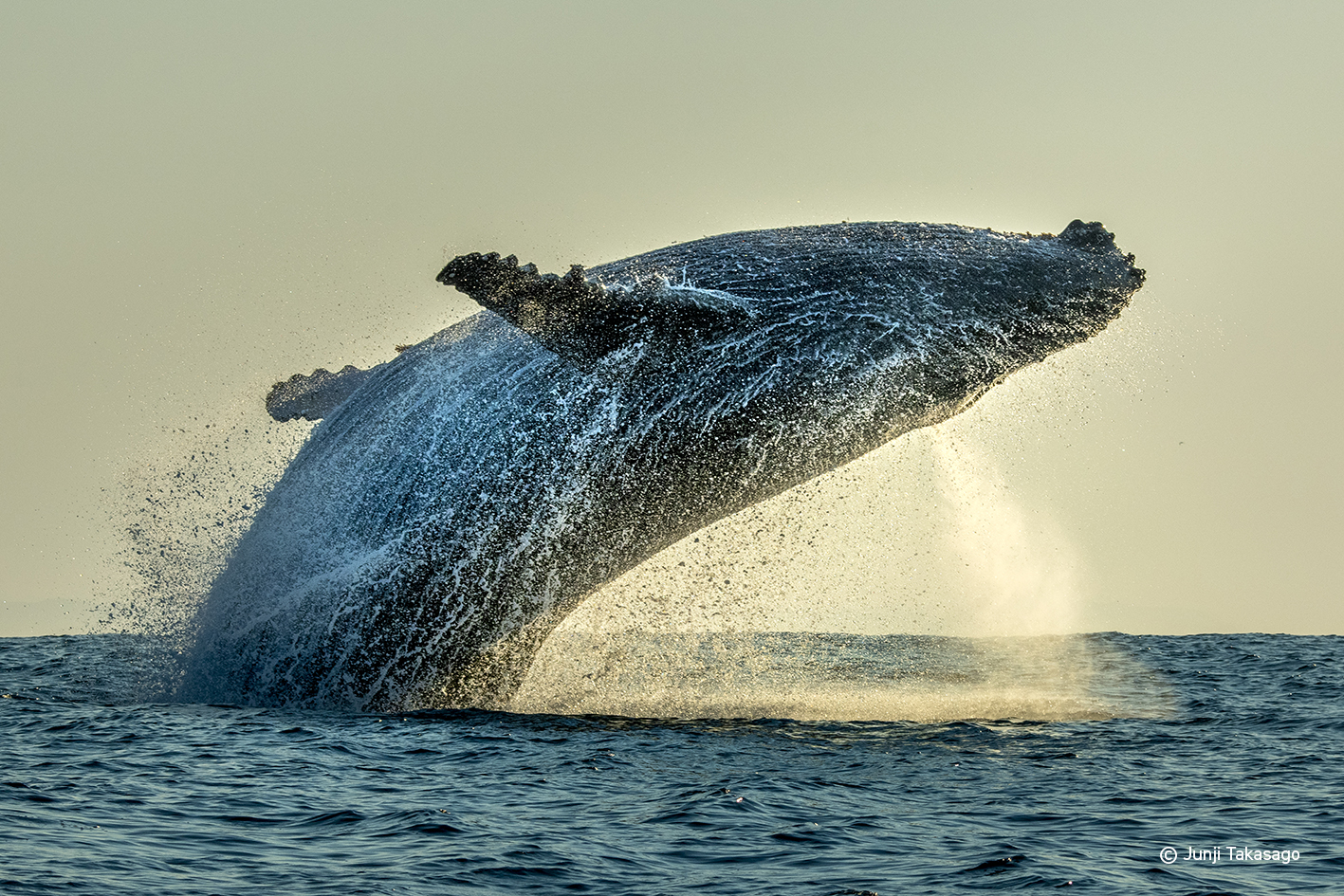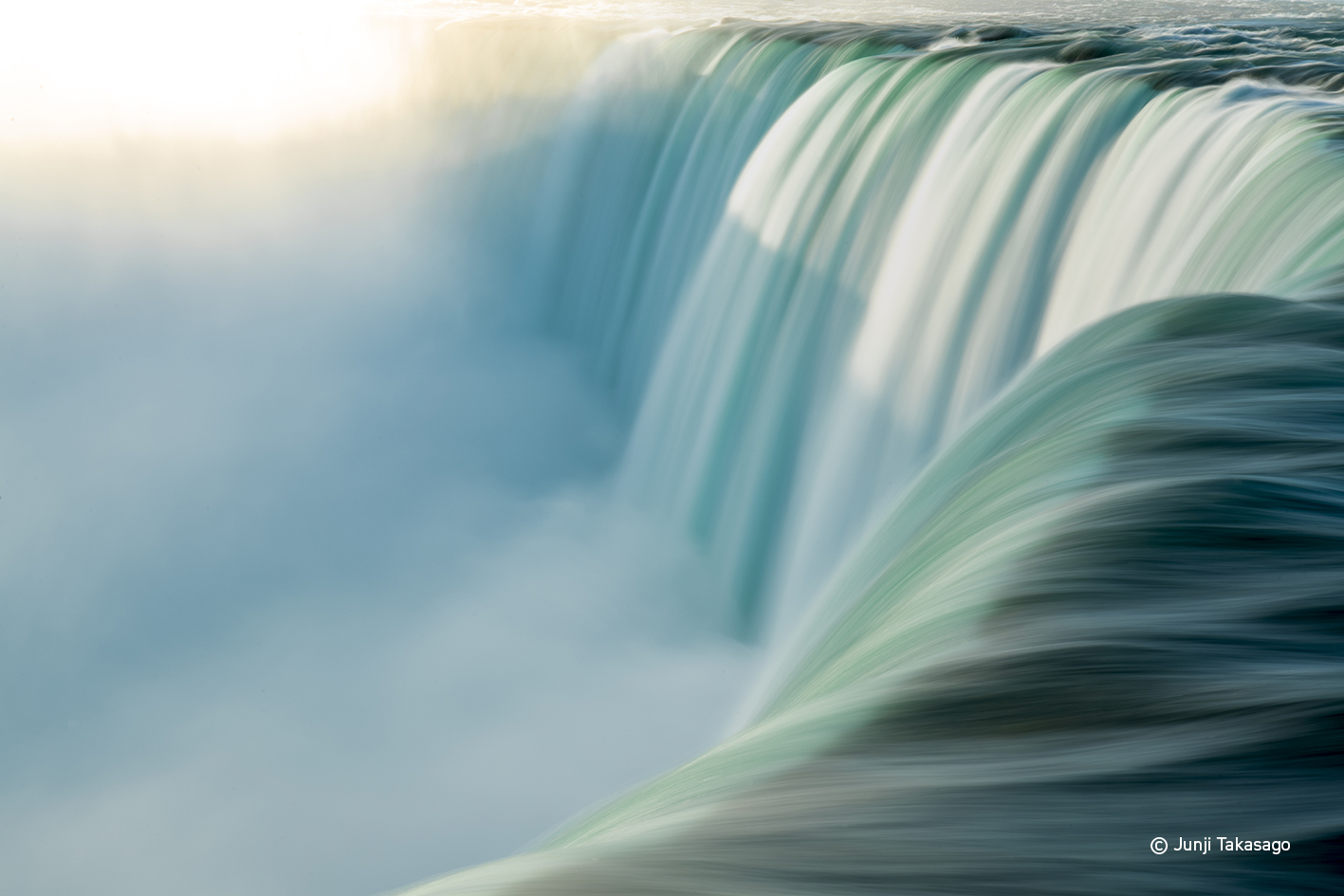Working as a nature photographer for over three decades, Junji Takasago has traveled all over the world shooting spectacular scenes. His latest book, Planet of Water, is published by National Geographic and documents the transience of water as it circulates the globe in different forms, as well as the creatures that live in and around it. We caught up with the photographer at Nikon Plaza’s The Gallery during the book’s commemorative exhibition in June to find out more about his career, philosophy and environmental efforts.
How did you first get into photography?
When I was a child, my father took photos and developed them himself, but back then
I wasn’t so interested in photography. I went to university to study electronics – that was a mistake! So in my third year I took a long holiday and went to Australia; I started diving and doing underwater photography. When I came back to Japan, I studied photography and then joined a publishing company for diving magazines. After that I started going to many countries to take photos. I worked there for three years and then became a freelancer.
Have you always been interested in the natural world?
My mind changed over time. In the beginning, I was just taking photos for fun but I became more interested in nature. I had so many questions and gradually I have been answering these questions and understanding more. In 2001 I went to Hawaii and met a native Hawaiian. He’s a special person, like a shaman, and he taught me so much. During that time, I encountered a night rainbow – a rainbow made by the moon. I became interested in Hawaiian culture and mythology and started studying other native cultures such as Native Americans, native Japanese and so on. I started paying attention to nature more that way, through spirituality, not only in scientific and physical ways; more internally, exploring the connection between humans and nature.
How do you think your photography has changed over time?
In the beginning I didn’t think about anything when I took photos, but gradually I understood that the most important thing is “why do I want to take photos of this scene?” I need to think about that, then find the answer. What subject should be shown to the audience? If I can understand that then people who see my photos can understand what it is I want to show them.
The most important thing was meeting the native Hawaiian. Hawaiians have a special way of thinking called Ho’oponopono. It’s a kind of Hawaiian wisdom. To see people, to see nature, to see animals, to see the earth, there are four important points: aloha [love], respect, forgiveness and appreciation. We need to think about these four things when we [interact with] somebody or something. They will create the balance between me and the other thing or person, otherwise we will fight, or we will break something. We will break nature. If we have respect for nature, if we have aloha, we don’t break it. That’s very important for photography too – if I have this kind of mind when I approach the animals, then they don’t run away.
Is it difficult working in extreme climates and have you had any dangerous experiences?
Twenty years ago I was diving in the Pacific and the boat captain fell asleep while he was waiting on the boat. When I came up to the surface after an hour or so, I couldn’t see any boat! I was with another buddy diver and we were waiting for a long time on the surface, drifting, whilst he was asleep on the boat, drifting away somewhere else. He woke up and looked for us and finally found us. We couldn’t see any islands or anything, just nothingness, and actually the tiger sharks were gathering for food so we were very scared!
Last March, I went to the Arctic to take photos of the polar bears and it was minus 50 ̊C. I took electric gloves because it was so cold. We started looking for bears in the morning and by the time we finally found them in the evening, the battery [for my electric gloves was flat]. My fingers started getting so cold, especially my pointer finger as it has to stick out to take photos. I wanted to cry it was so painful! But I was still able to take some of the photos you can see in the book.
Have you seen changes in the environment due to global warming?
Twenty-one years ago I saw so many seabirds dying on the beaches. They were full of plastic things in their stomach, that’s why they died. I was shocked. I was with some friends on one of the Midway islands in the Pacific, where albatrosses give birth. At that time, I started thinking I should do something for nature. I became the director of an NPO called OWS (The Oceanic Wildlife Society). It operates from Japan, researching coral reefs, cleaning up beaches and creating chances for people to learn about nature.
The world has been getting warmer and warmer, the ice is getting thinner and thinner. When I went to the Arctic 22 or 23 years ago, the ice was so hard and thick, it was very easy for the helicopters to land; nowadays it’s so thin that sometimes we can’t even land, and sometimes there is no ice at all. It’s very hard for the seals to give birth and raise their young.
I went last year and at the beginning [of my trip] it was very cold and the ice was thick. I took some photos of the seals. But when I checked a website that shows the ice formations on the sea, I found there’s no ice there anymore – after I’d left, the temperature had risen quickly. It takes four weeks until baby seals can be alone and take care of themselves but there was only two weeks before they lost the ice … It’s not enough time, maybe all of them died. This kind of thing is happening all over.
Do you think environmental issues are often overlooked because of the modern world’s lack of connection to nature?
Most people think we are not connected and that we are different: “This is me, the Earth is the Earth, the animals are animals.” But we are connected. We are made of water. We need to understand the system of the Earth and the universe. The Earth is always full of hope and it wants to give us food and medicine all the time. The Earth is always trying to give us food so we can live in peace and be healthy. But we are doing things beyond that system; we are breaking it.
Western people are doing more than the Japanese with regards to plastic issues. For example, Japan is very slow at deciding the laws for plastic pollution. We need to be more conscious about plastic; it’s waking people up all over the world. Europe is moving so fast because they understand the situation. More education is important. Even at my exhibition, visitors didn’t have any information but once they came and read the captions, they could understand, “Oh, this is happening … Oh, the Earth is this beautiful but it’s almost breaking?” They can feel it.
Out of all the places you have visited, do you have any favorites?
One is Hawaii where I learned so much and met the native Hawaiian and saw the night rainbow; it’s special to me as that’s the time when I changed my work. One more place is Salar de Uyuni in Bolivia. That is where I took the photo that became the cover of Planet of Water. That place is called “mirror of the sky,” and especially at nighttime when the sky is clear and there’s no moon, all the stars reflect on the water and it’s like you are in space. You see stars everywhere – look down you see stars, look up, stars!
Do you have a message you would like to share?
I want people to understand the problem with microplastics. That’s important for now and we need to change, that’s why I decided to make this book. We need to understand the system of the Earth. We shouldn’t lose our way. We don’t like to lose in the money world and we also shouldn’t want to lose in the natural world either. We need money, sure, it’s important, but we need the Earth. It’s very important, but it’s easy to forget; we always need reminding.
Planet of Water by Junji Takasago is published by National Geographic and available on Amazon for around ¥2,400. For more, visit junjitakasago.com
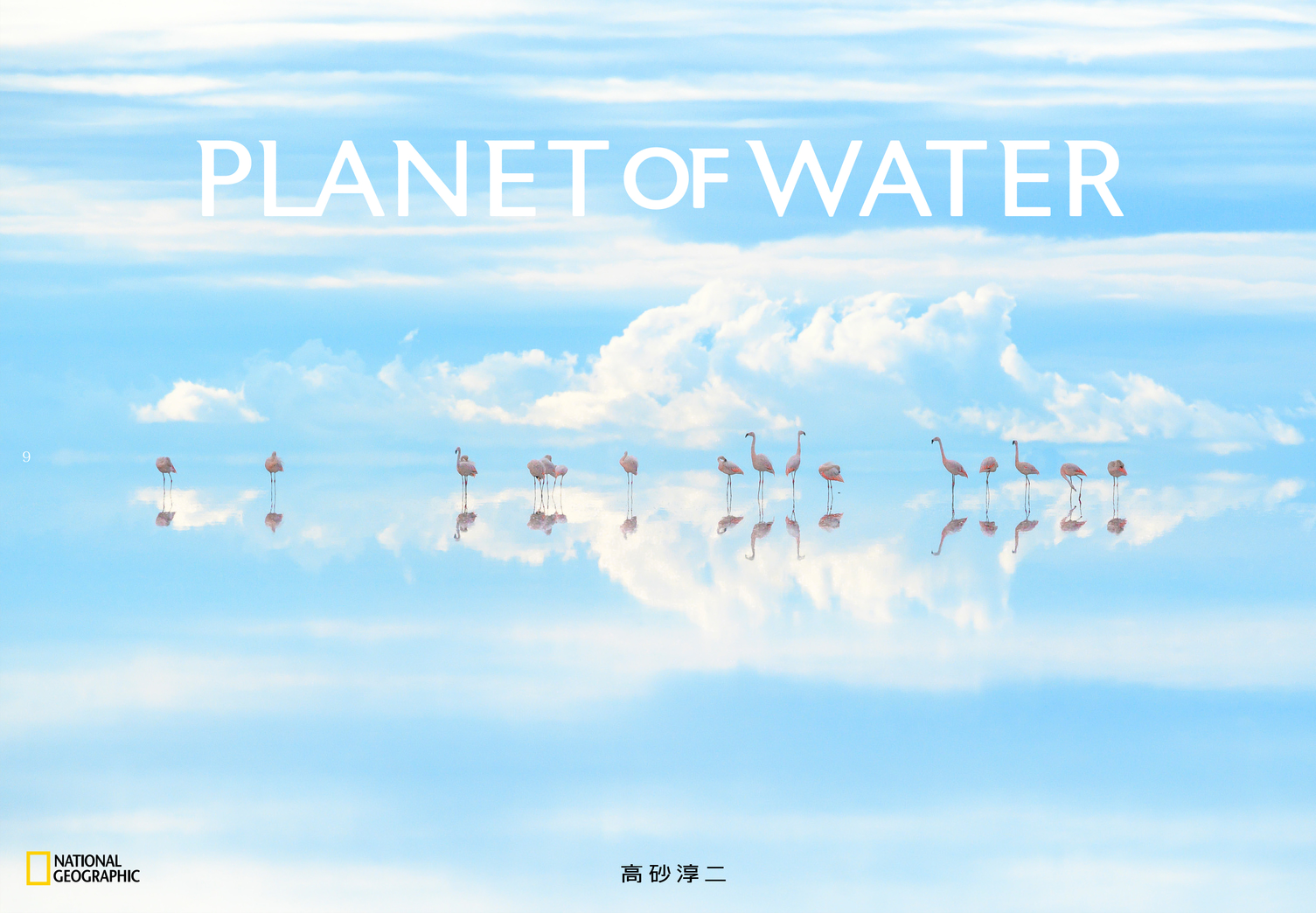
Updated On June 6, 2021

